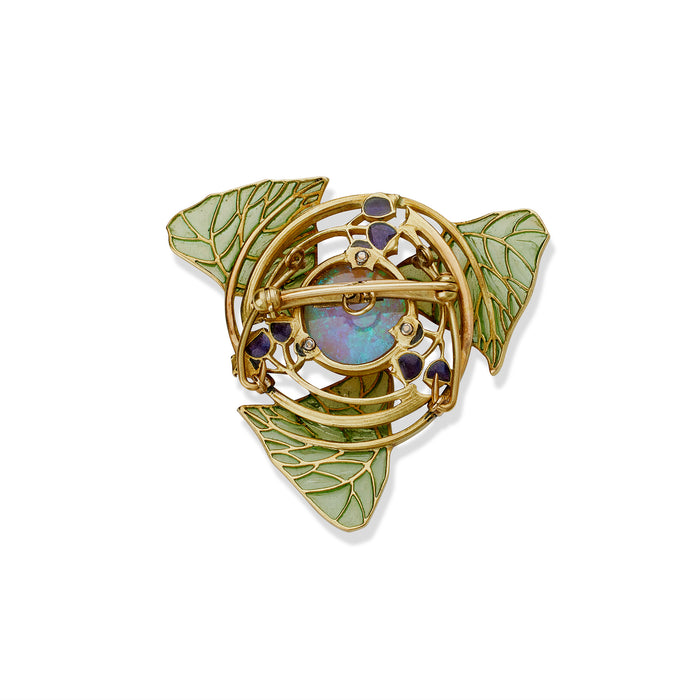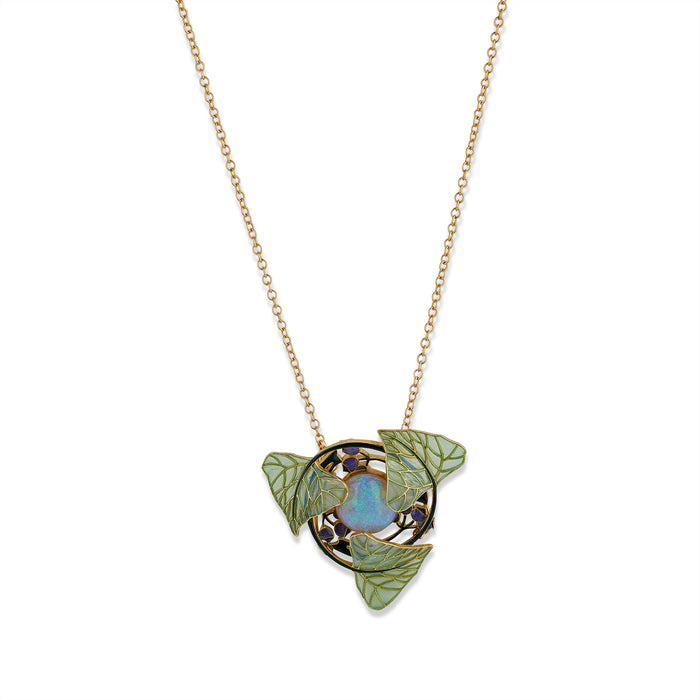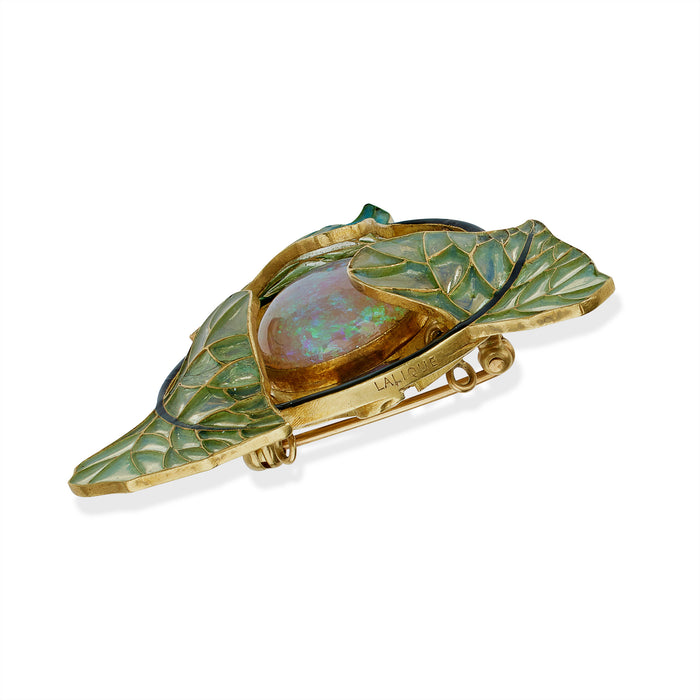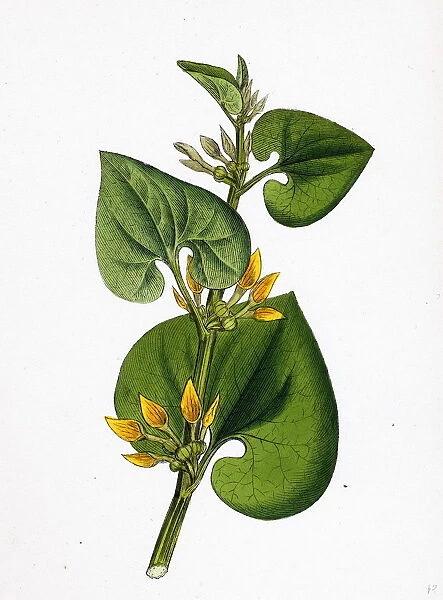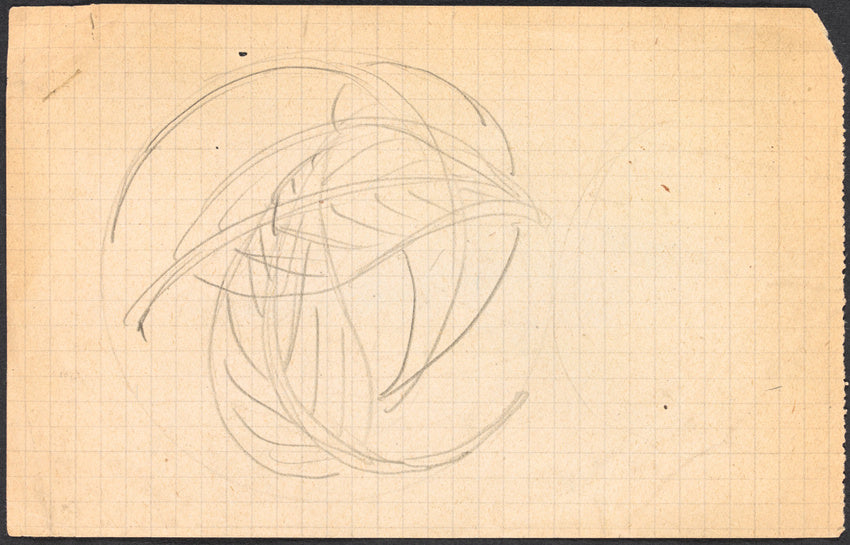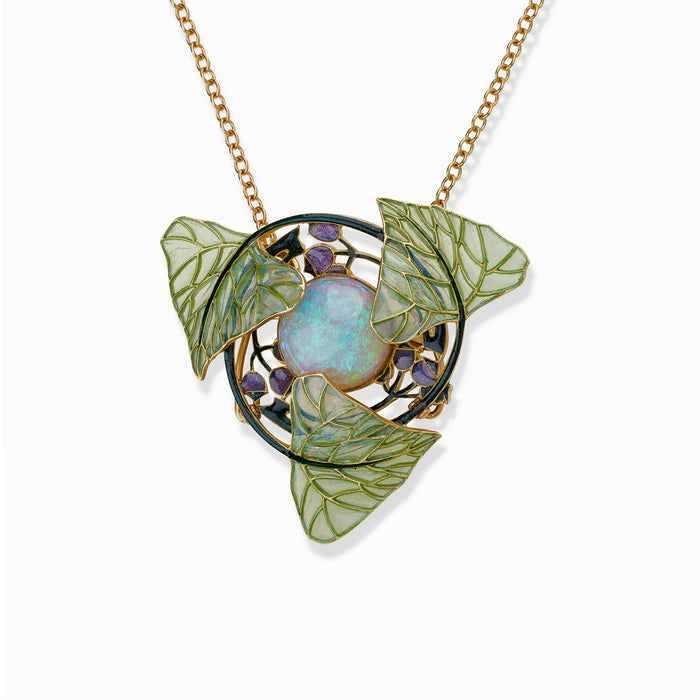
René Lalique Art Nouveau Plique-à-jour Enamel and Fire Opal Pendant Necklace
$65,000
Created circa 1898-1900, this René Lalique Art Nouveau pendant brooch/necklace is composed of enamel, fire opal and 18K gold. Centering a fire opal cabochon with vivid green and blue pinpoint phenomena, it is designed as a swirl of three stylized pale bluish green plique-à-jour enamel poplar leaves interspersed with indigo plique-à-jour enamel berries tipped with blue champlevé enamel, supported on a variegated deep green and black enamel vine, suspended from a later trace link chain. Drawing elements from the traditional shapes of crests ("mon") and schools of floral design ("ikebana"), this delicate jewel of harmonious blues and greens expresses Lalique's deep immersion in Japonisme.
- Product Details
- Curator's Notes
Item #: N-21373
Artist: René Lalique
Country: France
Circa: 1898-1900
Dimensions: 1.75" length, 1.75" width.
Materials: 1 cabochon fire opal; Enamel 18K Gold;
Signed: LALIQUE
Literature: Two similar designs for plant brooches designed as blossoms on a spiraling vine are pictured in the catalogue raisonné René Lalique Schmuck und Objets d'Art, by Sigrid Barten, p. 398, nos. 973 and 974. On design #973, Lalique's directions to his artisans, written in ink, specify that the mounting was to be made by hand by "gravé remolayé", with various types of enamel.
Exposure to Japanese art, which fundamentally shaped the work of Degas, Van Gogh and Cassat, also revolutionized design in the French decorative arts, sweeping away the long dominant Renaissance Revival aesthetic.
At his gallery in the 9th arrondissement, the "Maison de l'art Nouveau", Siegfried Bing sold some of Lalique's early jewelry. An influential pioneer of the Art Nouveau, Bing was the chief proponent of this new aesthetic that drew heavily from Japonisme, paralleling Lalique's development. Before his conversion to the Art Nouveau, Bing had published an influential journal, "Artistic Japan", and had imported Japanese art and antiquities for years that had been eagerly consumed by artists and intelligentsia. Lalique's early exposure to Bing's ideas and the Japanese aesthetic continued to influence him in a variety of profound ways throughout his career. By the 1890s, Lalique fully internalized the ethos of Japanese artists' fresh visual language, and their Shinto reverence for nature corresponded to his own piety for the countryside of his childhood.
This jewel is a one of a small, documented group that appear to be informed by the form and tight stylization of the Japanese "mon", or family or institutional crest, an emblem traditionally incorporated into architectural elements, on clothing, armor or other decorative arts. A well-known "mon" of the Tokugawa family of Shoguns (ruled 1603-1867), with a triple leaf motif, may have inspired this group of jewels. Surviving draftsman's production sketches with Lalique's instructions written in ink depict each open form with three blossoms, of poppies or pinks, set on swirling stems, in a variety of champlevé, transparent, and pailonné enamels. This jewel appears to be a third of this group.
The idea of the "mon" remained a pervasive concept in the Parisian design vocabulary, inspiring the "mon"-like quatrefoil logo of Louis Vuitton, many of whose clients, those most appreciative of their exquisite craft, were aristocratic Japanese travelers.
Lalique's jewelry also reflects the Japanese art of flower arranging, "ikebana", a term meaning "giving life to flowers". Informed by principles of Buddhist minimalism, impermanence, and harmony, the art was inspired by the practice of ritual flower offerings made in temples. The custom was the subject of popular woodcuts known in France.
Ikebana forms are apparent in Lalique's tiaras and combs, often featuring a single blossom bending over under its own weight, or incorporating, as here, spiraling stems or vines. At the same time, hair accessories were the dominant form of jewelry in Japan. As in "rikka", an early classical school of ikebana, a few strands leafy flowering stems or vines were meant to suggest a full natural landscape, an idea deeply meaningful to Lalique.

